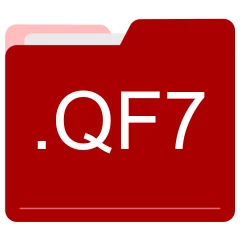QF7 file format description

Many people share QF7 files but don't explain how to use them. This can make it hard to know which software can open, change, or print these files. We made this page to help you understand how to work with QF7 files. Here, you'll find info on software that works with these files. This includes simple programs for opening and converting them. We also share simple steps for editing these files and changing them into different formats. Whether you need to open, edit, or change a QF7 file, our website has all the tips and tools you'll need to do it easily.
1 filename extension(s) found in our database:
QF7 - SAS 7 Sequential Engine FDB Data
The QF7 file is categorized under Development. It is associated to Base SAS, serving as a SAS 7 Sequential Engine FDB Data. SAS (Statistical Analysis System) is an integrated system of software products provided by SAS Institute. Visit the website of Base SAS for a detailed description of the QF7 format.
| Application: | Base SAS |
|---|---|
| Category: | Development files |
| Mime-type: | application/octet-stream |
| Magic: | - / - |
| Aliases: | - |
SAS 7 Sequential Engine FDB Data related extensions:
Did someone accidentally misspell the QF7 filename?
The QF7 filename extension may be misspelled. We compiled a list of similar file extensions to help you find errors.
Filename extensions similar to QF7:
- qfi Intuit Quicken 2002 Data
- qr7 SAS 7 Sequential Engine Item Store Data
- qt7 SAS 7 Sequential Engine Audit Data
- qc7 SAS 7 Sequential Engine Catalog Data
- qv7 SAS 7 Sequential Engine View Data
- qd7 SAS 7 Sequential Engine Data
Windows can't open your QF7 file?
When you try to open a file by double-clicking it, Windows looks at the file's name to figure out what to do. If Windows doesn't know the file type, it'll ask you to choose an app to open this QF7 file.
To set the QF7 file association in Windows 11, you can follow these steps
- Open the Settings app by clicking on the Start menu and selecting the gear icon.
- In the Settings app, click on System and then select Apps from the left-hand side menu.
- Scroll down and click on the Default apps option.
- In the Default apps section, you will find various categories. They include Email, Web browser, and Music player.
- Locate the category that matches the file type you want to associate. For example, choose Photos for image files, or Video player for video files.
- Click on the current default app listed under the category. A list of available apps will appear.
- Choose the app you want to set as the default for that file type. If the app you want is not listed, click on More apps to see more options. Or, click on Look for an app in the Microsoft Store to search for apps.
- After selecting the app, it will become the default choice for opening files of that type.
It's worth mentioning that you don't always need to set QF7 file association. Many apps can open files. They don't need a specific file association to be set.
Handle QF7 files with care
Exercise caution when handling QF7 files from unknown sources. Files from certain sources can threaten your computer's security. They might contain malware, viruses, or harmful software. To minimize risks, avoid downloading or opening unfamiliar QF7 files. Use trusted antivirus software to scan files from unknown sources before opening.
If you find the information on this QF7 page useful, please feel free to link to this page.